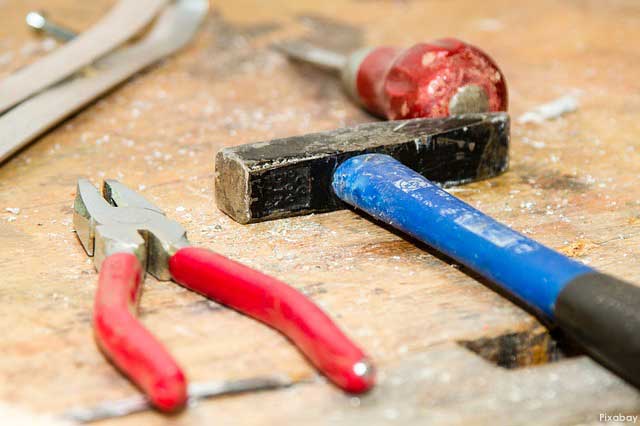|
Get Free Moving Quotes
|
|
Repairing Dorm Room Damage |
|
Rating : 3.0/5
based on 1 visitor(s) 1,671 Views
|
|
|
|
|
|
One of the first things you should do after moving to school is assess any dorm room damage. Differentiating the existing damage in the beginning of the school year from any damage caused after move-in day is essential for every university resident. This way, you will not get blamed for any damage you did not cause, and you can have existing damage filed and fixed quickly. But, for any damage you may cause during the school year, there are plenty of ways to repair these holes, scrapes and marks.
Preventing dorm room damage
The easiest way to repair damage in your room is to take the necessary precautions to avoid damaging anything in the first place.
- Take photos of all existing damage. Get photographic proof of any and all existing scratches and holes on the walls, as well as marks on the furniture. Also, take note of the blinds, windows, doorknobs and chairs.
- Adhere to university policies. Find out your school's policy about decorating your room and follow the rules. Most dorms have pretty strict rules for what is/isn't allowed in the rooms. Acknowledging these regulations and sticking to them is the best way to avoid paying fees at the end of the year.
- Use paint-friendly adhesive to hang items from walls. You may not notice until the end of the year when you are packing up, but make sure you don't use adhesive materials that can damage the paint on the walls. This is probably the most common reason university residents end up paying fees after moving out of their dorms. So, stick to materials like painter's tape to keep the walls unharmed when hanging up posters and prints.
How to repair wall damage
Okay, so maybe it's too late. Maybe you've already used adhesive that messed up your dorm's paint. Or perhaps you had some type of accident and made a small hole in one of the walls. Fear not, there are ways to fix these problems.
Damage from adhesive:
- Use sandpaper to remove leftover adhesive and loose paint chips. Brush away these remnants with a dry cloth to prevent further damage.
- Using a putty knife, fill any uneven spots with drywall paste and slide the flat end of the tool to smooth out the paste. Give the paste some time to dry after you've made it flat.
- After it's dried, use sandpaper to make sure the damaged area is both flat and smooth.
- Apply primer to the newly repaired area. Allow some time for it to dry completely.
- Find a paint color that is a close match to the wall's paint and apply one or two coats, depending on the color you need to match.
Small holes:
- Use a putty knife to apply a minimal amount of caulk to the damaged area. Smooth it out with the flat end of the tool.
- Apply another coat of caulk if the surface is still uneven.
- Use similarly-colored paint to touch up the repaired area.
How to repair furniture damage
Your university most likely provides you with the necessities, such as a bed frame, a desk, a chair, and maybe even a dresser and/or nightstand. Chances are that these pieces of furniture are made of wood, which can be easily damaged -- especially when it comes to university students, many of whom are living away from home for the first time.
Scratches:
- Buy some good wood furniture polish to hide ugly scratches on your tables, chairs and other wooden dorm room furniture. Be sure to get the appropriate type of polish, depending on the tone of the wood.
- Combine two or more crayons to create the perfect shade and cover up the scratch. Lightly buff the repaired area when you're done to finish the job.
Extra tip: You can cut a walnut in half and rub it over the scratch mark. The nut's natural oils should fill in the mark and hide it.
Water ring marks:
- Cover the damaged area with a thick cloth and use an iron to press over it. Remember to keep the iron from making direct contact with the wooden surface, or else you'll have an even bigger problem to worry about.
- Complete the job by using citrus oils. Use a soft cloth to rub orange or lemon oil on the repaired wooden surface.
Chips and cracks:
- Use a plastic knife to carefully apply wood putty to the damaged region of the furniture.
- After giving it time to dry completely, use a nail file to smooth it.
Now that you know how to prevent and repair dorm room damage, you might be the go-to resident in your building. Other students will be running to you to repair all of their damaged furniture and walls as the semester's end approaches. You have two options: 1. Help your fellow university residents with their damages (and maybe make some money) or 2. Tell them to head over to Topmoving.ca for all of their moving -- and university living -- needs! |
|
 |
Author : Ryan Hussey
on November 11, 2014
TopMoving.ca - Moving Expert
|
| |